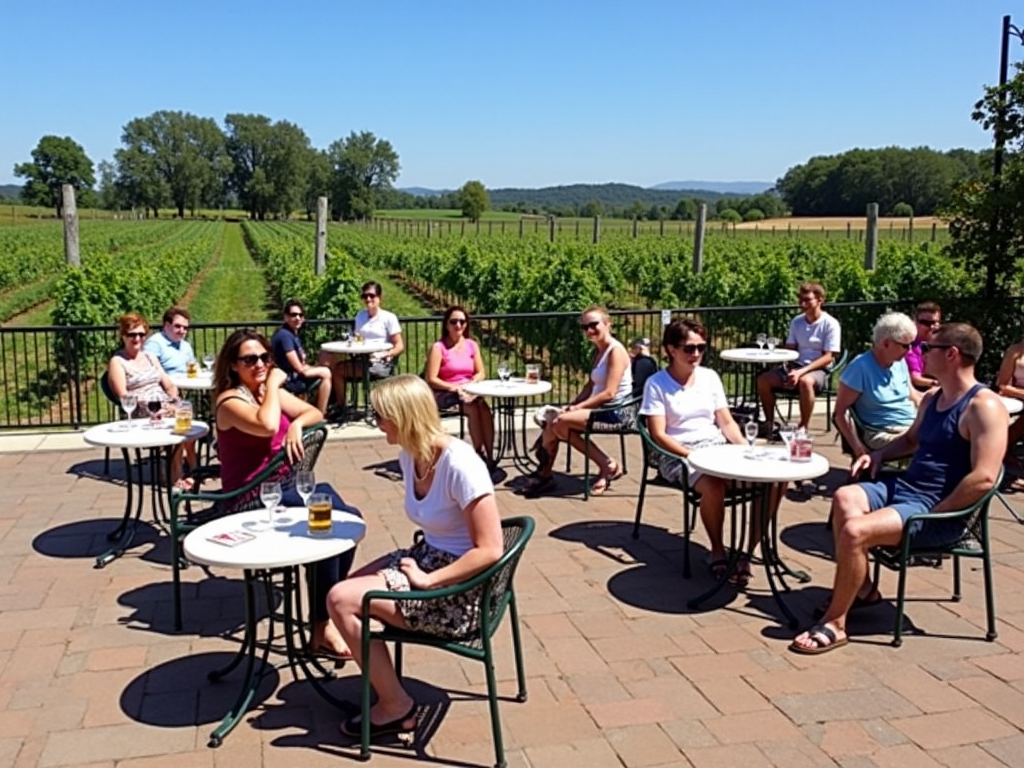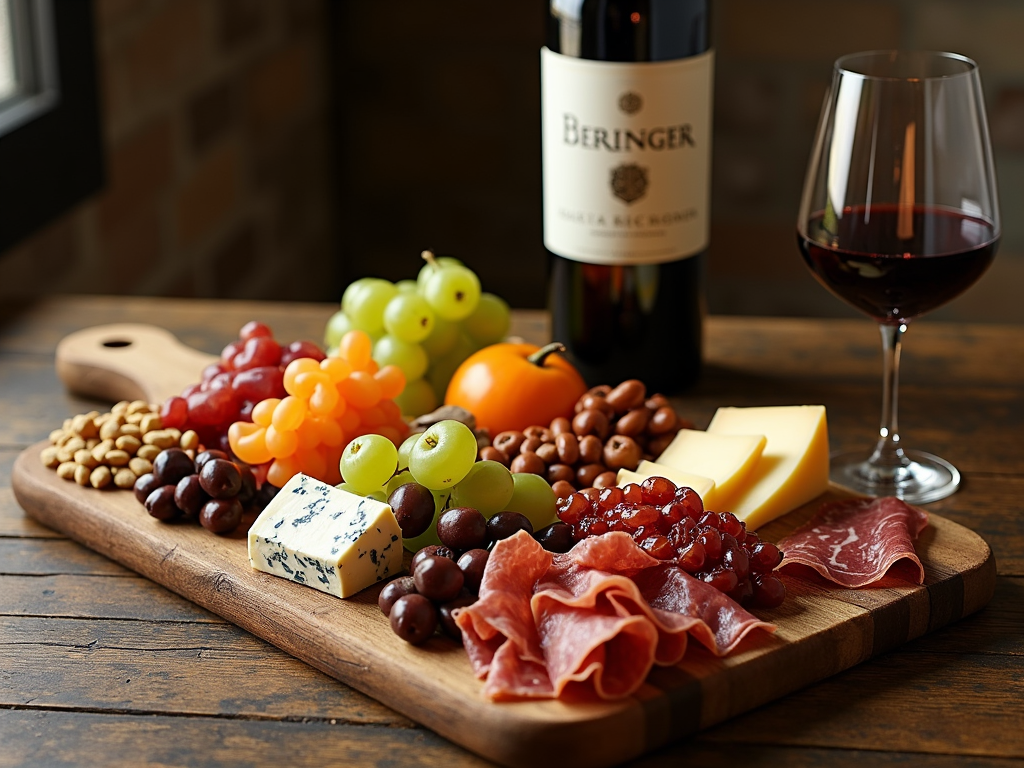Tips for a Memorable Wine Tasting Experience at Beringer
Wine tasting is an art that engages all your senses, and at Beringer, one of Napa Valley's most storied wineries, it's an experience like no other. Founded in 1876, Beringer has been crafting exceptional wines for over a century, and their tasting events are a testament to their legacy. Whether you're a seasoned oenophile or a curious newcomer, these tips will help you make the most of your visit to Beringer, ensuring a memorable and enriching experience.
Tip 1: Prepare Your Palate
Your palate is your most important tool in wine tasting. To fully appreciate the nuances of each wine, it's crucial to start with a clean slate. Avoid consuming strong-flavored foods or beverages before your tasting. Coffee, spicy dishes, or even minty toothpaste can linger on your taste buds and interfere with the wine's flavors.
At Beringer, they understand the importance of palate preparation. Upon arrival, you'll often find water and plain crackers available. Take a moment to sip some water and nibble on a cracker to neutralize any lingering tastes. This simple step can make a significant difference in your ability to discern the subtle notes in each wine.

Tip 2: Engage All Senses
Wine tasting is a holistic experience that involves sight, smell, taste, and even touch. Begin by observing the wine's appearance. Hold the glass up to the light and note its color and clarity. Is it a deep ruby red or a pale straw yellow? Swirl the wine gently to see how it clings to the glass, which can indicate its viscosity and alcohol content.
Next, bring the glass to your nose and inhale deeply. The aroma, or "nose," of the wine can reveal a lot about its character. You might detect fruity notes like berries or citrus, or more complex scents like oak, vanilla, or spices.
When you finally taste the wine, take a small sip and let it roll over your tongue. Pay attention to the initial flavors, the mid-palate, and the finish. Is it sweet, dry, acidic, or tannic? How does the texture feel in your mouth?
At Beringer, the tasting rooms are designed to enhance this sensory experience. The ambiance, from the historic Rhine House to the modern tasting lounges, sets the perfect stage for immersing yourself in the wines.
I remember my first visit to Beringer. As I held the glass of their Private Reserve Chardonnay, I was struck by its golden hue. Swirling it, I noticed the legs slowly trickling down the glass, hinting at its richness. The aroma was intoxicating—notes of butterscotch and ripe pear filled my senses. When I finally took a sip, the creamy texture and balanced acidity danced on my tongue, leaving a lingering finish that I still recall fondly.
Tip 3: Ask Questions
One of the joys of wine tasting is learning about the wines and the stories behind them. The staff at Beringer are not only friendly but also incredibly knowledgeable. They can provide insights into the winemaking process, the history of the vineyard, and the unique characteristics of each wine.
Don't be shy—ask questions! Whether you're curious about the grape varieties used, the aging process, or the best food pairings, the staff are there to help. Their passion for wine is contagious, and their answers can deepen your appreciation for what you're tasting.
For example, during my tour, I asked the guide about the significance of the Rhine House. She explained that it was built in 1884 by Frederick Beringer and is a replica of his family home in Germany. This piece of history made me appreciate the winery's heritage even more.

Tip 4: Take Notes
Keeping a record of your tasting experiences can be both practical and enjoyable. Whether you use a traditional notebook or a wine-tasting app, jotting down your impressions helps you remember what you liked and why.
For each wine, note the name, vintage, and your sensory observations. What did you smell? What flavors did you detect? How did the wine feel in your mouth? You might also rate the wine on a scale or note any food pairings you tried.
Over time, these notes can serve as a personal wine journal, allowing you to track your preferences and discover patterns in your taste. At Beringer, you might find yourself referring back to your notes to recall a particular wine that stood out.
Tip 5: Pace Yourself
Wine tasting is meant to be a leisurely activity, not a race. With multiple wines to sample, it's important to pace yourself to fully appreciate each one. Take your time with each glass, savoring the flavors and allowing your palate to rest between tastings.
Remember to drink water regularly to stay hydrated. Wine can be dehydrating, and water helps cleanse your palate as well. If you're tasting many wines, consider spitting into the provided spittoons. This is a common practice among professionals and allows you to sample more without overindulging.
At Beringer, the tasting rooms are designed for comfort, with seating areas where you can relax and enjoy the wines at your own pace. Take advantage of these spaces to sit back, reflect on the wines, and perhaps discuss your thoughts with fellow tasters.

Tip 6: Explore the Vineyard
To truly understand the wines, it's worth exploring the vineyard itself. Beringer offers various tours that take you through their historic estate, including the iconic Rhine House and the surrounding vineyards.
Walking among the vines, you can see the grapes growing and learn about the terroir—the unique combination of soil, climate, and topography that influences the wine's flavor. You might also visit the winemaking facilities to see how the grapes are transformed into wine.
These tours provide context for the wines you're tasting, making the experience more immersive. You'll gain a deeper appreciation for the craftsmanship and dedication that goes into each bottle.
During my visit, I was amazed by the meticulous care given to each vine. The guide pointed out the different grape varieties and explained how the microclimate of Napa Valley contributes to the unique flavors of Beringer's wines. Seeing the grapes up close made me realize the labor and love that goes into every bottle.
Tip 7: Pair with Food
Food and wine are natural companions, and pairing them thoughtfully can elevate both. At Beringer, you might have the opportunity to enjoy food pairings with your tasting, such as artisanal cheeses, charcuterie, or even chocolate.
Ask the staff for recommendations on which foods complement specific wines. For instance, a bold Cabernet Sauvignon might pair well with a rich, savory dish, while a crisp Chardonnay could be enhanced by a light, creamy cheese.
If Beringer offers a pairing event or a dining experience, consider participating. It's a delightful way to explore how different flavors interact and to discover new favorite combinations.

Tip 8: Buy a Bottle
If a particular wine captures your heart, consider purchasing a bottle to take home. Not only does this support the winery, but it also allows you to share the experience with friends or relive it on a special occasion.
Beringer offers a wide range of wines, from accessible everyday options to prestigious reserves. Whether you're looking for a souvenir or a gift, you'll find something to suit your taste and budget.
Before making a purchase, you might want to ask the staff for recommendations based on your preferences. They can guide you to wines that align with your palate and suggest how to best enjoy them at home.
Summary
A visit to Beringer is more than just a wine tasting; it's an opportunity to immerse yourself in the world of wine. By preparing your palate, engaging all your senses, asking questions, taking notes, pacing yourself, exploring the vineyard, pairing with food, and perhaps buying a bottle, you'll create a truly memorable experience.